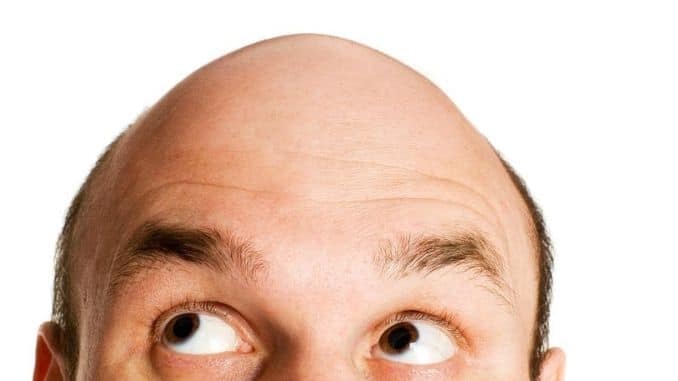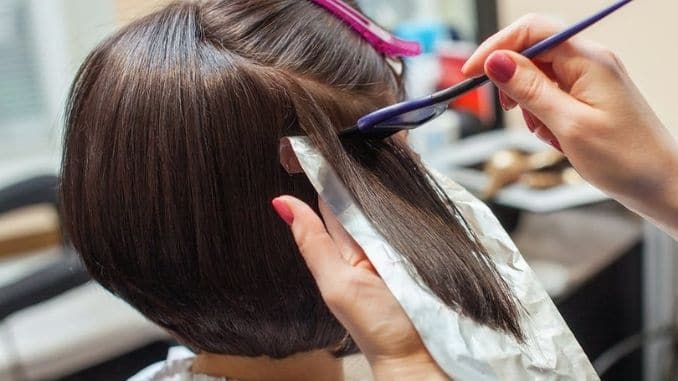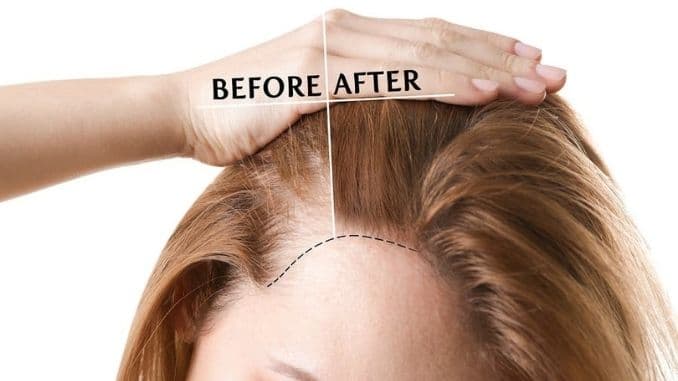
The American Hair Loss Association (AHLA) states that by the age of 35, two-thirds of American men will experience some degree of hair loss. The same is true for about 40 percent of women by the age of 40.
Despite how common it is, hair loss is still bothersome for most people. The International Society of Hair Restoration Surgery (ISHRS) reported in 2010 that about a quarter of Americans felt their hair loss made them less attractive while less than 5 percent said it didn’t bother them. As many as seven in 10 would trade a treasured personal possession for more hair and, when asked if they’d prefer more hair, money or friends, about 43 percent said they’d prefer more hair.
Women suffering from hair loss often experience emotional difficulties and even psychological damage, particularly if the hair loss makes them feel unattractive. The AHLA states that the effects can be “just as devastating as any serious disease and, in fact, can take an emotional toll that directly affects physical health.”
Men are not immune to the emotional side effects, however. According to a 2005 study in which researchers surveyed men suffering from hair loss, 62 percent of the respondents said that hair loss could affect self-esteem, and 43 percent said they were concerned about it affecting their personal attractiveness. Nearly half were concerned about becoming bald, and about one-fifth reported feelings of depression related to hair loss.
Fortunately, we have many successful bald men in today’s world who serve as positive role models. Make it more socially acceptable for men to be without hair. Women have fewer role models to turn to and can, therefore, feel more embarrassed or self-conscious because of it.
Regardless of your gender, if you’re noticing that your hair seems thinner than normal. If your hairline seems to be receding. You probably have one question on your mind: is there anything I can do about it?
What Causes Hair Loss?
The most common causes of hair loss is male pattern baldness or female pattern hair loss — gender-specific terms for the same condition. Doctors call it “androgenetic alopecia,” and it means that male hormones are affecting hair growth.
No matter your gender, you have both male and female hormones in your system, just different levels of each. (Men have more male hormones and women more female hormones.) When dihydrotestosterone (DHT), a form of the male hormone testosterone, starts binding to more of your hair follicles, it causes them to malfunction, and the hair is no longer able to survive.
This type of hair loss is related to your genes — you inherit it from your parents. So if you have hair loss or baldness in your family, you’re more at risk for it, yourself. The genes determine your sensitivity to DHT and are believed to be to blame for the onset, progression, and pattern of hair loss among family members.
For women, the condition usually shows up around menopause. The drop in the estrogen hormone allows the hormone DHT to work undeterred. Although women don’t have as much DHT as men do, it can still cause damage once there’s less estrogen to deter it.
The same hormone causes male pattern baldness, gradually affecting hair follicles and causing receding hairline and bald spots. It can also make hair thinner and weaker so that it’s more likely to break off. Genes mostly determine when the process starts, with some men suffering hair loss as early as puberty and others closer to middle age.
Other Potential Causes of Hair Loss
Androgenetic alopecia isn’t the only thing that causes hair loss, however. Other possibilities include:
-
Hormonal Changes
As noted above, menopause brings on hormonal changes, which can trigger hair loss. Other conditions that affect your hormones can do the same thing. Some examples include thyroid problems, polycystic ovary syndrome, which causes an imbalance in female hormones, and pregnancy — hormonal changes can cause temporary hair loss. In some cases, women who have been taking birth control and then go off the pills — especially if they have hair loss in their families — may experience some hair loss.
-
Autoimmune Conditions
Illnesses or conditions that affect the immune system can result in hair loss. One of the most common is called “alopecia areata,” which occurs when the immune cells mistakenly attack hair follicles. It can lead to patchy hair loss or complete hair loss. It can also affect fingernails and toenails. Lupus is another autoimmune disease and, in some cases, the immune cells will attack the hair follicles, creating symptoms similar to alopecia areata.
-
Infections
Ringworm and other scalp infections can cause hair loss. Hair typically regrows once the infection is cleared up.
-
Scalp Conditions
If you have dandruff, psoriasis, or other similar skin conditions, these can affect the hair follicles to the point of damaging hair growth. Other skin conditions like lichen planus and scleroderma can cause hair loss too.
-
Iron Deficiency and Anemia
Women, in particular, are at risk for this condition if they have heavy periods. The condition can cause hair loss in some cases.
-
Medications
Some medications have been linked to an increased risk of hair loss in sensitive people. These include certain chemotherapy drugs, beta-blockers for high blood pressure, antidepressants and nonsteroidal anti-inflammatory drugs (NSAIDS) like aspirin and ibuprofen.
-
Intense stress
When the body and mind are under extreme stress, it can affect many physiological systems, including hair growth. Intense emotional and physical stress can cause a type of hair loss called “telogen effluvium,” which is more of an overall thinning of hair rather than outright hair loss. Childbirth, a death in the family and illnesses may also cause this type of hair thinning.
In most cases, your hair loss isn’t your fault. You can, however, make it better or worse, depending on what you do in your daily life.
How You Could be Making Your Hair Loss Worse
“Your ponytail is too tight!” Molly’s mom told her. “Your hair’s going to fall out!”
Molly rolled her eyes but, as usual, Mom was right. A condition called “traction alopecia” is actually caused by trauma to the hair follicles, brought on by tight hairstyles that cause damage over time.
This type of hair loss is usually reversible — stop with the tightness — but not if you have other risk factors for hair loss. If you’re going into menopause, for example, and you’re noticing some thinning, pulling your hair tight is the last thing you want to do. In other words, if you’re concerned at all, avoid ponytails, cornrows, braids, buns and other types of tight styles. Teasing and backcombing strains the hair too and can weaken it over time.
Harsh hair treatments can also make it harder for the hair you do have to thrive. Weaves, extensions, hot oil treatments and the like can cause inflammation in the scalp, which can lead to hair loss. Scarring can make that hair loss permanent. In a 2009 study, researchers found a link between the use of sewn-in weaving and cornrow styles as well as artificial hair extensions, hair damage and hair loss.
Some other things you may be doing to exacerbate hair loss include:
-
Blow-Drying Wet Hair
Wet hair is fragile, and attacking it with heat and a brush damages it. Let hair dry a bit, first.
-
Bleaching Hair
Bleach breaks the cuticle of the hair, dries it and weakens it. Always go to a pro and, if you notice signs of breakage, stop for a while to give your hair time to recover. If you’re already experiencing some hair loss, avoid the bleach.
-
Eating a Poor Diet
The hair follicles need the right nutrients to support full hair growth. Strict weight-loss diets can rob you of the nutrients you need for healthy hair.
-
Failing to Control Stress
Stressing out on a regular basis can lead to hair loss. Try to adopt a regular stress-relieving activity such as meditation, yoga, regular exercise, time with friends, pet care, art therapy or anything that helps you feel more relaxed and at ease.
Possible Treatments for Hair Loss
Depending on what’s causing your hair loss, you may be able to make the situation better. If you have androgenetic alopecia, however, realize that your options may be limited to the following:
-
Minoxidil (Rogaine)
This is an over-the-counter treatment that can be used by women or men to help regrow hair. Don’t expect miracles. It works in some people but, in others, it may result only in a slower rate causes of hair loss. Meanwhile, it can cause side effects like scalp irritation or hair growth where you don’t want it, such as on your hands or other areas of your face. Use gloves when you apply it and give it time. It takes about 16 weeks to see results.
-
Propecia (finasteride)
This is a drug approved to treat the causes of hair loss only in men. It can help slow the rate of loss and may result in “some” regrowth. There are some potential side effects, including diminished sexual function and an increased risk of prostate cancer. Talk to your doctor before using this one.
-
Surgical Hair Transplants
This is a more serious procedure that involves taking hair from one place and grafting it to another. If you still have hair at the back and sides of your head, you may be a good candidate for this treatment. It results in only modest improvement, so be sure to talk to your doctor about your expectations. The treatments can cause side effects like swelling, bruising and headaches.
-
Laser Treatments
This is a follicle-stimulating treatment that may help improve hair growth in some people. The laser waves are thought to help enhance blood circulation and promote hair growth. The treatments typically last several months.
-
Hormone Replacement Therapy
If you’re a woman suffering from serious menopausal symptoms, hormone replacement therapy (HRT) can help ease symptoms like night sweats and hot flashes and may also help restore hair. Although a 2002 study frightened many women off this treatment, more recent research has found short-term use to be safe in healthy women 60 years or younger.
There are some other medications that may help too. Spironolactone (Aldactone) is a prescription diuretic that also tames the action of DHT, and cimetidine (Tagamet) is a drug used to treat stomach ulcers, but it may also help with female pattern causes of hair loss. Again, it’s best to talk to your doctor about these.
The topical antifungal treatment called ketoconazole (Nizoral) may also help reduce male hormones, slowing hair loss. It’s often found in hair-loss treatment shampoos.
10 Natural Ways to Regrow Hair
If you’re suffering from androgenetic alopecia, natural treatments may not help as much as you’d like. However, since they do not create side effects, they’re always worth a try. They may help slow it down and make it easier for you to maintain the health and thickness of the hair you do have.
If your hair loss is caused by something else, such as an illness, poor diet, stress or other issue, natural treatments are more likely to help. Here are several you can try:
1. Use Natural Oils
Lavender, thyme, rosemary and cedarwood, when combined and rubbed regularly into the scalp, may help counteract alopecia areata, that patchy sort of hair loss. In one study, 44 percent of participants who massaged these oils in a mixture with jojoba and grape seed carrier oils into the scalp daily showed improvement compared to those using a placebo massage oil.
2. Try Saw Palmetto
There is some preliminary research indicating that saw palmetto may help slow or stop causes of hair loss. In one 2014 study, researchers found that men who massaged a hair lotion containing saw palmetto into the scalp daily for 4 months increased hair count by 11.9 percent — to the point that about half of the patients noticed a difference. Saw palmetto is believed to block the effects of DHT. A small study also reported improvement in men taking an oral supplement.
3. Drink Spearmint Tea
Preliminary research suggests that spearmint tea — when consumed twice a day — may help reduce levels of male sex hormones. That may help you fight androgenetic alopecia since DHT is a male hormone. One study by Turkish researchers showed that women who drank the tea twice a day experienced reduce levels of male hormones as well as an increase in several female hormones, including the follicle-stimulating hormone. We need more studies on this one to determine if it really works, but since spearmint tea has other health benefits, including antioxidant protection, it’s worth a try.
4. Use Aloe Vera
If you have dandruff, psoriasis, or other conditions that affect your scalp, rubbing aloe vera into it a few times a week may help. It can unblock hair follicles so that hair can grow more easily.
5. Try Viviscal
This is an oral supplement designed to help combat hair loss. In a 2012 study, researchers gave it to healthy women aged 21 to 75 years who had thinning hair. They gave another group of women a placebo. Those taking the supplement, which contains “AminoMar C,” a marine protein complex, experienced significant hair growth. In a 2015 study on the same supplement, women taking it showed a significant increase in the number of hairs and also had less hair shedding. These studies were done with women experiencing “temporary” hair loss.
6. Try Biotin
If you’re taking a vitamin B supplement, you may already be getting enough biotin. If not, consider it, as it is essential for hair loss. Some people report stronger, thicker hair when taking biotin.
7. Combine Fish Oil with Blackcurrant Seed Oil
In a 2015 study, researchers gave healthy women a supplement containing fish oil (460 mg), blackcurrant seed oil (460 mg), vitamin E (5 mg), vitamin C (30 mg) and lycopene (1 mg) for 6 months. They gave another group a placebo. They tested hair density at the start and end of the study. Results showed that those taking the supplement experienced improvements in hair density — hair became thicker — and 90 percent of women reported an overall decrease in hair loss.
8. Massage In Some Onion Juice
It probably won’t smell the best, but onion juice has shown some promise in helping to promote hair growth, particularly if you have alopecia areata. In one 2015 animal study, researchers found that onion juice helped significantly increase hair growth over a placebo. An earlier study also found that it was effective in a small group of human subjects with alopecia areata. After six weeks, hair regrowth was seen in 86 percent of patients. Try it twice daily for a couple of months.
9. Drink More Green Tea.
According to some studies, green tea — in addition to all its other health benefits — can reduce the amount of DHT in the body. A 2005 animal study found that 33 percent of subjects who consumed green tea had significant hair regrowth after six months.
10. Massage Your Scalp.
It’s time to give your scalp some love. According to a 2016 study, regular scalp massage resulted in increased hair thickness in 24 weeks. Researchers found that the action of the massage changed the gene expression in the dermal papilla cells — cells at the surface of the scalp that play a pivotal role in hair formation and growth. Massage also increases blood flow to the scalp, stimulating it and bringing in vital nutrients. Try four minutes of massage a day. The easiest way is to do it while you’re shampooing your hair, or combine it with some of the helpful essential oils mentioned here for double the benefit.
If you want to trim down your body, get younger, increase your metabolism and energy, and heal your pain, then check out the Best Foods That Rapidly Slim & Heal in 7 Days, here!.







